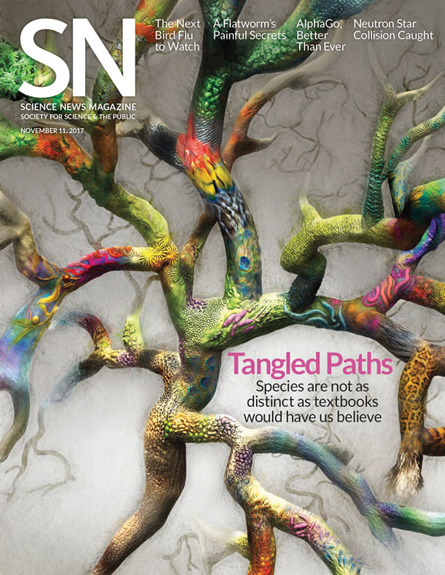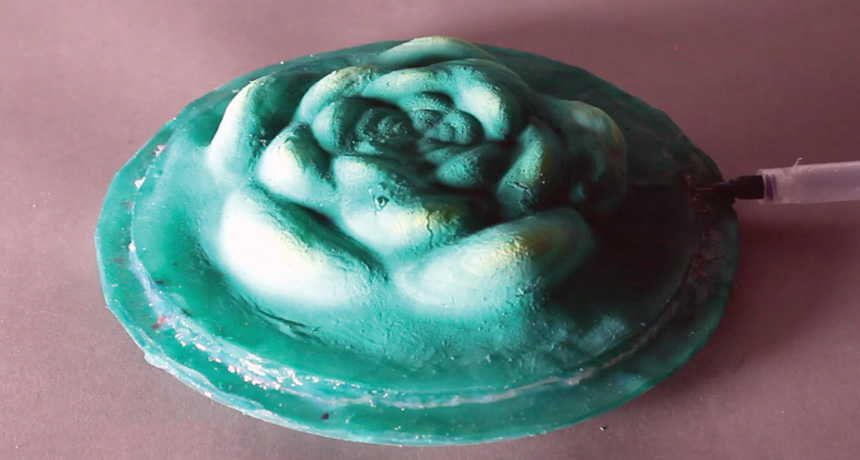Readers wrangle with definition of ‘species’
Your letters and comments on the November 11, 2017 issue of Science News
 Species shmecies
Species shmecies
In “Defining ‘species’ is a fuzzy art” (SN: 11/11/17, p. 22), Susan Milius asked scientists to define “species.” Schoolbooks may define the concept as a group of organisms that create fertile offspring when mating with each other but not when mating with outsiders. But for researchers specializing in the topic, a single definition is hard to come by.
“It seems to me that when it comes to animals and especially animal fossils, that biologists are always looking to maximize the number of species,” online reader Mark S. wrote.
MJF Images disagreed: “Sometimes we learn of new species and sometimes we learn we have made a mistake. But naturally as we explore more environments (the deep seafloor, for example), we discover organisms we have never encountered. That addition to the list of known species is certainly not an attempt by biologists to artificially ‘maximize’ species counts.”
Online reader Casey Burns thought scientists should move past the debate over lumping versus splitting and focus on the concept of “guilds.” Guilds are collections of species that occupy the same niche in an environment, and are a way for researchers to gauge biodiversity.
Milius’ essay focused on species, but “an identical discussion could be carried on about nearly any feature of science,” wrote sailor376. “Real science is messy. Real science is fuzzy. All concepts and conclusions, all things ‘proven,’ need to be periodically reexamined.”
Ticktock
A new atomic clock’s tick rate is about six times as precise as the previous record-holder, Maria Temming reported in “New atomic clock is most precise yet” (SN: 11/11/17, p. 8).
Steve Capps wondered if gravity could affect atomic clocks: “Since time slows in a gravitational field, are atomic clocks so sensitive that perhaps moving them from the ground floor to the second or third floor of a building would have a measurable effect, given that gravity would be less on the higher floors?”
Atomic clocks indeed speed up when they are moved from the ground floor of a building to a higher floor, says Jun Ye, a physicist at JILA in Boulder, Colo. “In fact, even by just raising one’s arm on the same floor, you can measure [that] time speeds up,” Ye says.
Element factory
A neutron star collision 130 million light-years away produced gold, silver, platinum and other heavy elements, Emily Conover reported in “Neutron star collision showers the universe with a wealth of discoveries” (SN: 11/11/17, p. 6).
Reader Tom Angelo wondered how elements could form from a neutron star smashup if these stars lack protons and electrons.
Neutron stars aren’t made entirely of neutrons. “The crust of a neutron star is made of lower-density material that contains protons, neutrons and electrons,” Conover says. The most neutron-rich matter is deeper within the neutron star.
When the stars collide, the neutron-rich material gets expelled along with nuclei that form from the crust. “The nuclei serve as seed material for the process in which these elements form, swallowing up plentiful neutrons and growing heavier,” Conover says. “When a nucleus can’t take in any more neutrons, it will undergo beta decay, which converts a neutron in the nucleus into a proton, while releasing an electron and a lightweight particle called an anti-neutrino. That’s how elements further along the periodic table are formed.”







